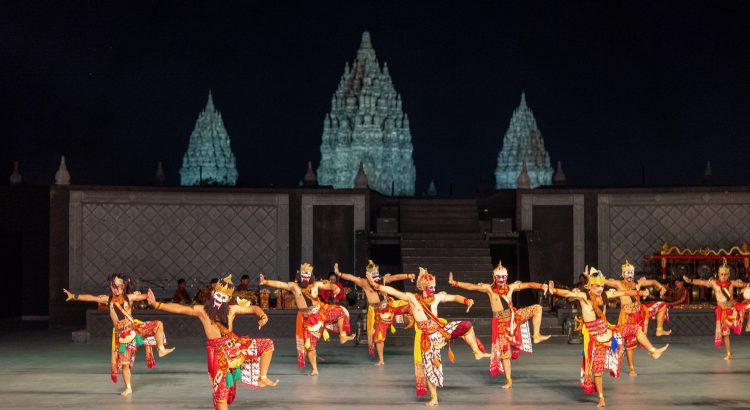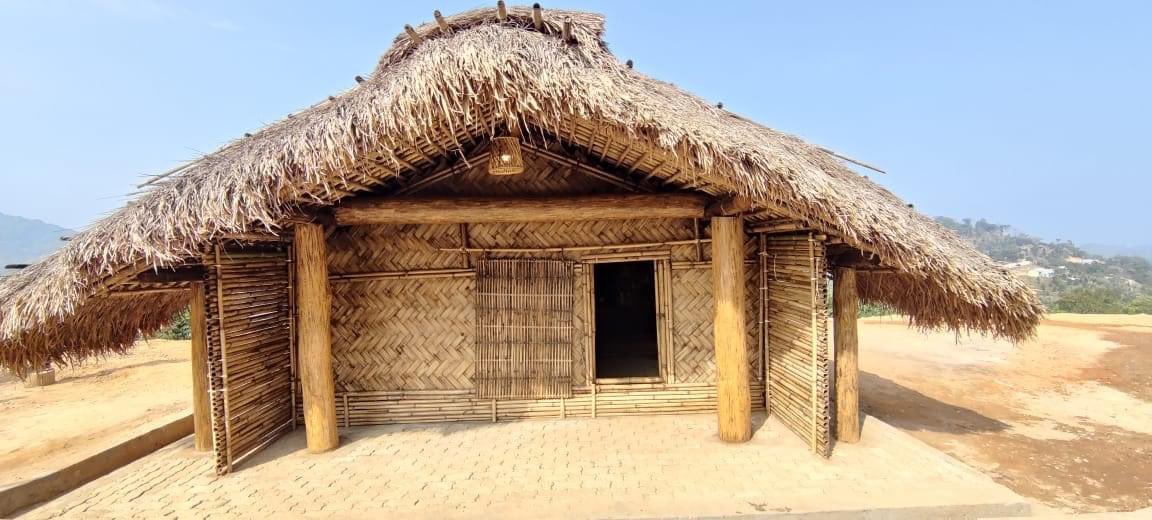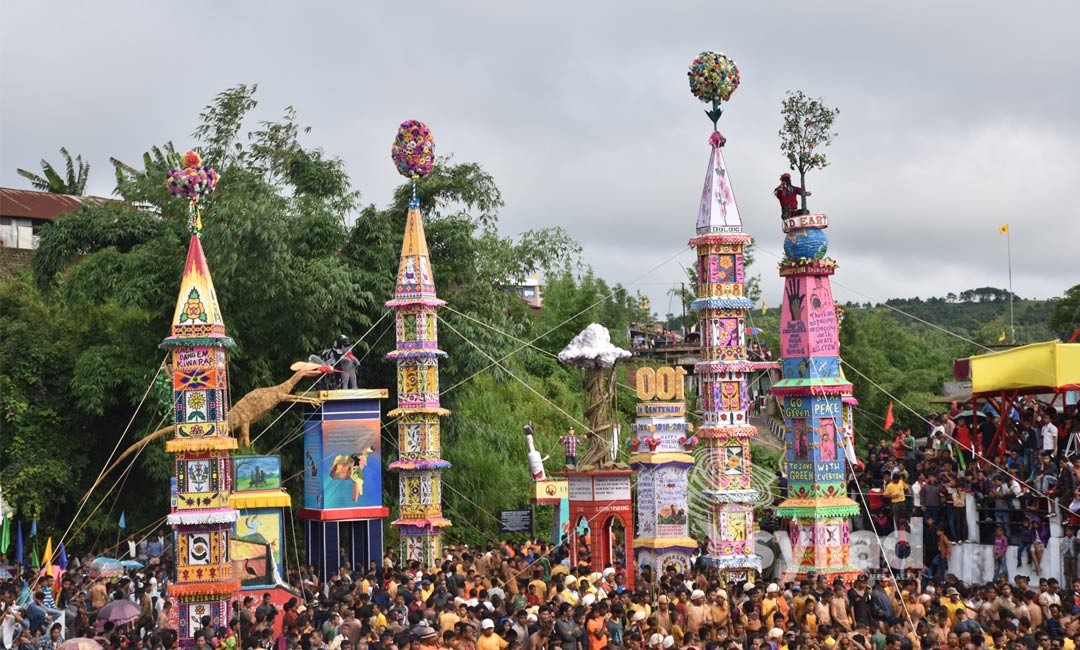Anupa Biswas
A great factor that linked the culture of Indian subcontinent with the culture of various nations of South East Asia has been the adoption of ‘Ramayana’ and ‘Mahabharata’, two major religious epics of ancient India as part of their own tradition and culture. The underlying theme of both the epics is nothing but victory of the good over evil. The story of king Rama in Ramayana has inspired and captivated the inhabitants of South East Asia for centuries which they have inculcated into their beliefs and faiths, religious perception, literature and language, social custom, various art form etc. which is vividly evident in their every walk of life. To suit their local culture, the stories of Ramayana have been studied, rewritten and retold with minor additions and alterations made by the pozi.s-writers. The oral reciters, folk-theatre artists, painters and sculptors in the countries of South East Asia so much so that all the countries of South East Asia have their own versions of ‘Ramayana’, which they look upon as their own cultural heritage and tradition, just like India. In Indonesia, the old Javanese version of Ramayana known as ‘Kakawin’ has been the most popular, well known and most studied text in Indonesia. For more than ten centuries, since the early days of Mataram (Medang) kingdom to the present day. Kakawin Ramayana is believed to have been written in-between late nineth and early tenth century in Madang kingdom. Not only in the past, even today, Ramayana and Mahabharata are taught in Indonesian schools as compulsory subjects.
Ramayana in Indonesia
Indonesian Ramayana is known as ‘Kakawin’ Ramayana. It is an old Javanese rendering of the Sanskrit Ramayana in Kakawin meter, i.e., in poetry style. Scholars believe that it was written in central Java (modern Indonesia) in around 870 AD during the era of Medang Kingdom. This age-old Javanese Kakawin Ramayana has been the most popular, well known and well-studied text of ancient lndonesia till today.
In Prambanan temple complex in Indonesia, which originally consisted of 244 temples, built in 9th century during the reign of Sanjaya dynasty in Yog Yakarta, (Mataram Kingdom), is the largest Hindu temple site in Indonesia and 2nd largest Hindu temple complex in the whole of South-east Asia. It displays many panels of bas-reliefs telling the story of Hindu epic Ramayanar & Bhagavata Purana.
The central temple at the complex of Prambanan (according to some scholars, it got its name from ‘Param Brahman’ by way of deformed pronunciation. Nearby temple is called Candi Siwa (Candi means the temple of Shiva). If we enter Candi Siwa temple from the east side & keep walking along the gallery of the temple, we will see the relief of Ramayana carved on the temple walls which describe the story of Ramayana in 41 frames. The story represented in this way can be summerised as below:
God Vishnu (Wisnu) was requested by the king of the world to descend on this world.s world. Wisnu (Vishnu) is incarnated in Rama, the oldest son of King Dasaratha of Ayodhya kingdom. Vishnu’s reincarnation ‘Rama’ is requested by Wiswamitra (Bishwamjitra) to kill giants who are regularly disturbing the Brahmins. Rama is successful in killing those annoying giants, including Tataka (Tadaka), a giantess. Now in accordance with Wiswamitra’s suggestion, Rama joins a competition in which the winner will be awarded a beautiful princess. The Princess named Sinta (Sits), is the daughter of Janaka’s friend Wiswamitra (according to Indonesian version). Rama wins the competition by stringing the sacred bow of king Janaka and thus achieved the right to marry Sita. Then Rama goes back to Ayodhya. On the way to Ayodhya, Rama is intercepted by Paracurama (Parasurama), but Rama defeats him. After his arrival in Ayodhya, Rama was to be crowned as a king, a successor of his father Dasaratha. But Kaikeyi (Kekayi), the second wife of king Dasaratha, asks her husband to fulfill his previously made promise to her. As per the king’s promise, it’s her son, Bharata, will be the king. Also, Rama is to banished to the forest, that’s the condition of Kekayi. Rama fulfills Kekayi’s wishes sincerely and Bharata is crowned as the new king. Dasarata, who is left behind by his son Rama, became very sad and fell sick and finally dies.
During his isolation in forest, Rama is accompanied by his younger brother Laksamana, and Rama’s wife Sinta (Sita). There they came across a giantess named Curpanaka (Surpanakha) who falls in love with Rama. But Rama spurns her as does Laksmana. Curpanaka gets furious and tells this matter to her brother, Rahwana, the king of the Giants. When Rahwana comes to Rama’s place, he sees Sinta and falls in love with her. By adopting various tricks, Rahwana kidnaps Sinta successfully and flies to Alengka (Lanka). Rama and Laksmana try to find and kill Rahwana.
During their efforts to find Sinta, they met two monkeys who were quarrelling. Those two monkey brothers were Sugriwa and Subali (Subali was also known as ‘Walins, ie, Bali). The two monkey brothers were fighting for the throne and the queen called Tara. Rama succeeded in helping Sugriwa to defeat Subali and as the repayment for the service, Sugriwa helped Rama to find Sita. Then Sugriwa sent a white monkey named Hanoman (Hanumana) , to find out where Sita is. Hanoman finally came to know that Sita was in the garden of Rahwana’s palace. The white monkey talked to Sita and in order to prove that he had met Sita, Sita gave him her ring to be delivered to Rama. Afterwards, Hanoman came back to meet Rama, Lakshmana & Sugriwa. He told them all of his experiences. Rama became very furious and decided to attack Alengka (Lanka) with the assistance of the whole monkey troops, the followers of Sugriwa.
The story of Rama’s attack to Alengka (Lanka) can be seen in the bas-reliefs at the temple of Brahma (Candi Bra-ma), which is located at the South of Candi Siwa (Siva’s temple). Candi Bra-ma (Brahma) is a smaller temple than Candi Siwa, since Candi Siwa is the main temple at Pranabanan. Brahma’s statue inside the temple is shown with four hands.
The continuation of the Ramayana story is inscribed at the wall of the Brahma temple’s inner Chamber. It tells about the war of Rama and Laksmana assisted by the monkey troops against Rahwana, who had kidnapped Sinta. Rahwana was helped by his brother, Kumbhakarna, though in the end, he was killed by hundreds of monkeys. Finally, Rama killed Rahwana with his bow and arrow. This way, Rama was able to unite with his wife Sinta. Thus, the story describes crushing of great evil, symbolized by king Rahwana, by the good which is represented by Rama, the incarnation of Vishnu, who maintained peace.
The other nearby temple in Prambanan temple complex is Candi Wishu (Vishnu) which is located at the north of Candi Siwa and is of the same size as that of Candi Brahma. There we can see the statue of God Wisnu (Vishnu) having four hands holding a club, a Shankh (conch) a Cakra (Chakra) and a lotus. The relief works found at the temple wall of Candi Wisnu is the story of Krishnayana ie, the story of Bhagavat Purana.
Since the story of Ramayana is vividly carved on the panels of the 9th century Pranbanan temple in Indonesia, it proves beyond doubt that Ramayana story was popularly known to them during that time. Nowadays an open air stage against the backdrop of illuminated Pramabanan temple stages their traditional Ramayana ballet based on the story of Ramayana through the medium of centuries old Javanese dance of the Javanese Royal court Since the 1960s, it is performed regularly there. The sultan of Yogyakarta subsidizes the world’s only daily performance of a dance ballet based on Ramayana. In 2012, it was anointed by the Guinness Book as the most continuously staged performance in the world. The highlight of this extraordinary show is that around two hundred artists who perform are all Muslims. They proudly declare ‘Islam is our religion. Ramayana is our culture.’
The two hour show starts at 7-30 pm, featuring sub-titles on a screen, in Indonesian Bhasa and English & costs about 20 dollar for a single ticket, which includes dinner as well.
In 1950, the first President of Indonesia, Sukarno remarkably called upon the people of Indonesia and India to “intensity the cordial relations that had existed between the two countries for more than one thousand years”.
The greatest of Indonesian nationalist leaders, president Sukarno also wrote in a special article in “The Hindu” on January 4, 1946 - “In the Veins of everyone of my people, Rows the blood of Indian ancestors and the culture that we possess is steeped through through with Indian influences.
Two thousand years ago, people from your countries came to Jawadwipa & Suvarna Dwipa in the spirit of brotherly love. They gave the initiatives to found powerful kingdoms such as those of Sri Vijaya, Mataram and Majapahit. We then learnt to worship the very Gods that you now worship still and we fashioned a culture that even today is largely identical with your own. Later we turned to Islam, but that religion too was brought by people coming from both sides of the Indus.”
Today Ramayana is not only the national epic of India; it is also the national epic of Indonesia. Even today in Indonesia, the world’s largest Islamic nation, Ramayana and Mahabharata are taughtas compulsory subjects in schools, colleges & universities.
Among the various cultural programmes based on Ramayana in Indonesia performed even today, ‘Waywang Kulit’ or shadow dance drama of puppets, various Legong and Barong dance forms apart from Ramayana ballet in Indonesia (Prambanan temple and other places) need special mention here.
Waywang or shadow dance of puppets is extremely popular in the island nations of Java, Bali, Lombok, Yogyakarta. The meaning of the world ‘Kulit’ is skin or leather & Way wang means shadow. Thus waywang is an art form in which puppets made of leather (or wood) are made to dance and this shadow is projected on the screen. Mainly stories from Ramayana, Mahabharata, Purana etc apart from some Javanese folk tales are shown in this shadow dance form.
Scholars are of the opinion that this puppet dance forms must have originated in India as we all know puppet dance forms of Rajasthan, Gujarat, South India are very popular. Suniti Kr. Chakttopadhyay, the famous linguist had written in this connection - “towards the end of 10th century AD, most probably it originated in India and then travelled to Indochina (Siam and Kamboj), Javadwip in the east, travelled to the Arabian nations. Iraq and Egypt, and was adopted later by the Turks.”
In Bali, Ramayana ballet is performed in 2 forms - as stylized ‘Sendratarr as performed in Ubud or as part of ‘Kecak’ dance as done in Uluwatu temple.
Thus, ancient Indian epics ‘Ramayana ‘and ‘Mahabharata’ in Indonesia, at least since early centuries of present millennium, enjoys the status of popular national epic, loved, studied and preserved in various forms of art, architecture and literature.
Referrence:
1.Ramayana Foot-Prints in South East Asian Culture and Heritage, Anita Bose, First Impression 2019
2. Prambanan, English Translation by Lenah Matius,first edition 1990
3 .The Ramayana Tradition in Asia, edited :V Raghvan, Sahitya Acadeni, First published in 1980.
4.Unique Influence of Ancient India on South East Asia: Harmonious Assimilation Of Culture and Heritage, Anupa Biswas, published by Chaitali Publishers and Book Sellers, Kolkata. First Impression 2023. ISBN 978-93-5811-185-9






